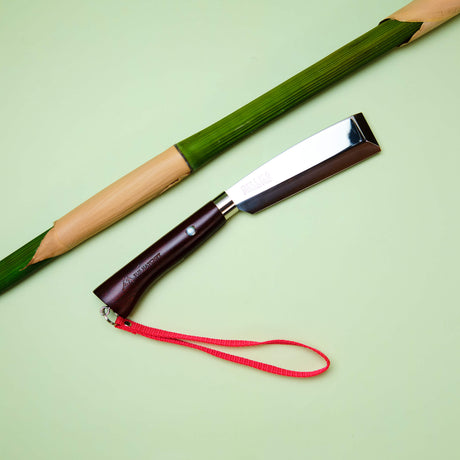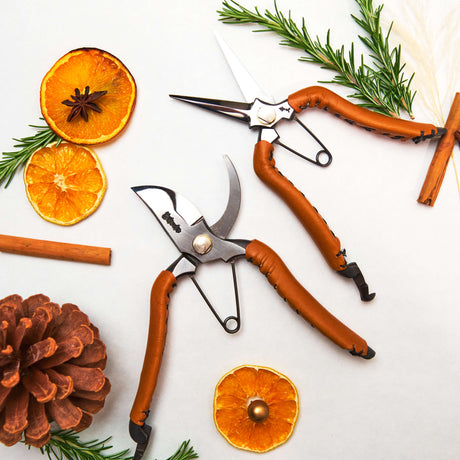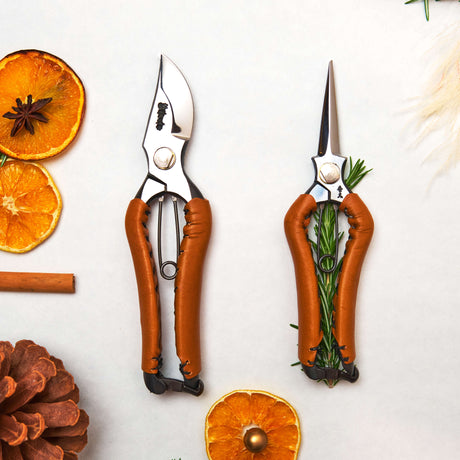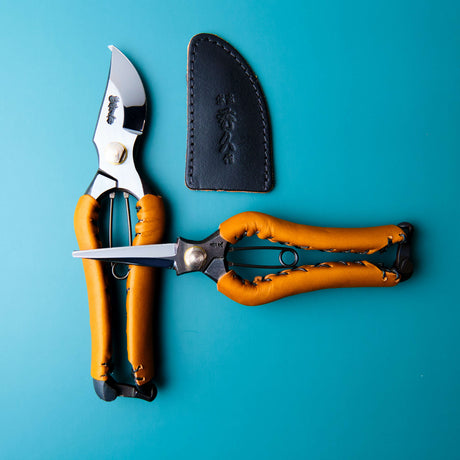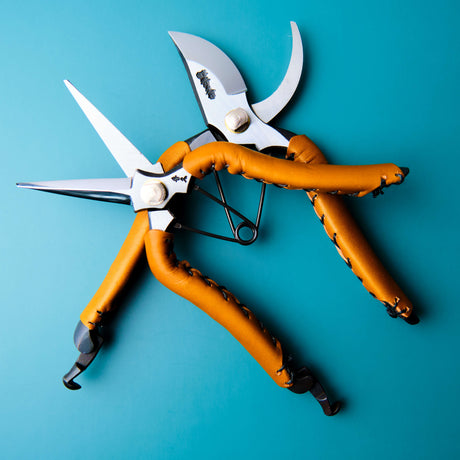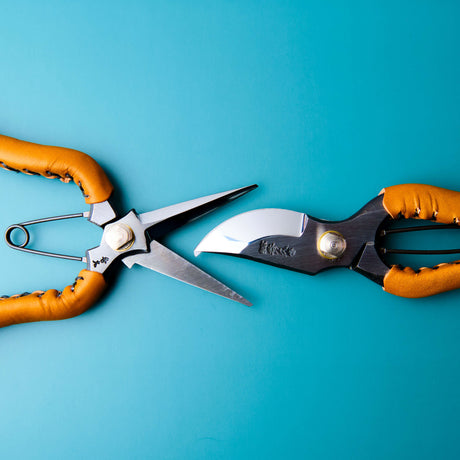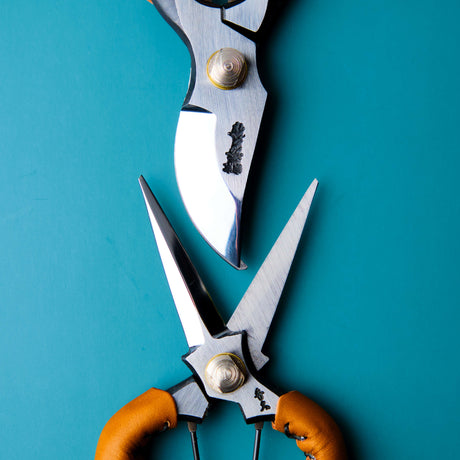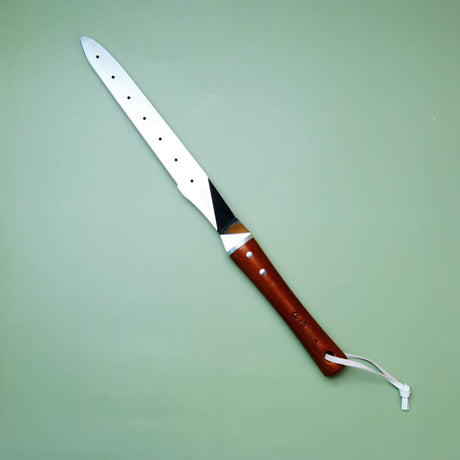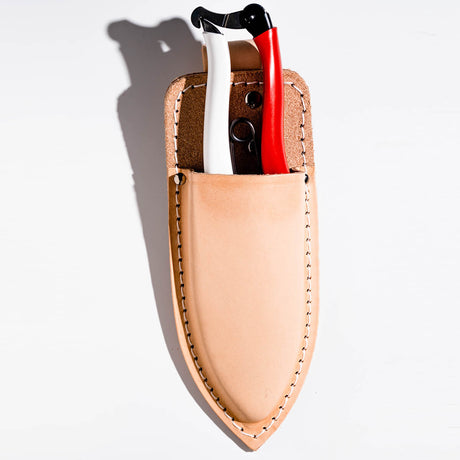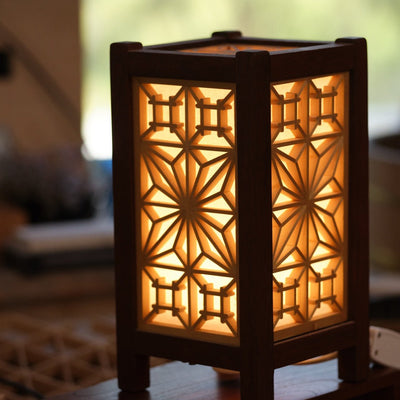With a whole heap of new garden tools in, we were in dire need of a place to try them out. As lovely as Kogarah's industrial zone is, it is long on panel-beaters and short on petunias.
This is a familiar story all over Sydney, and so we are fortunate that with a short drive up the Blue Mountains that there are places as beautiful, and as receptive to our phone calls, as Logan Brae orchard.
Logan Brae has been producing apples since 1919. Ten years ago, Sam took it over and has been doing amazing things. Logan Brae now grows over 50 varieties of apples, which means that Logan Brae's apple season has now been extended to run from March through to June.
Logan Brae only sells it's produce through it's own farm gate. Open on Saturdays and Sundays during apple season, different varieties are ripe week-to-week, and so every visit is a discovery. When we say these are the best apples we have ever had, we are not exaggerating. This week it was Gala, Freiburg, Jonathan and Fuji and that was in season.
Looking for more time away? You can book accommodation on the Logan Brae orchard, as well as their sister property up the road in Kanimbla. Holy moly does that place have some good views.

Anyway, the garden tools. We had a few jobs to get through on a very mild, pleasant day. The first one was to tame a raised bed of tomatoes that had grown a bit big for it's boots. This had been co-planted with shallots, and we were asked to pull that out as well as the grasses and a couple of weeds that had wormed their way in.
For this, there were a few excellent tools. This was my first time harvesting with a toothed sickle, and it made very short work of the shallots. It also did a beautiful job on a little tuft of spinach that had sprouted at the corner of the bed. I had the carbon version to hand, and I suspect that either it or it's stainless steel cousin will become favourites when it's time to bring in the produce from any garden.

The tomatoes themselves had wound their way in and around the netting, and getting those runners pruned apart was a job for the okatsune snips. These are beautifully sharp and dead easy to thread through delicate spots to snip just the right stalk. These ones were the long nosed version because that's what I picked up first.
Finally, the weeding of the garden bed was also like threading a needle.
I had to get out fine, clumping grass (no idea what this one was called) as well as some larger weeds with tap roots, all while protecting the drip irrigation system and the roots of the tomoatoes themselves.
For this, a combination of sickle and hori hori was just what the doctor ordered. Pulling the sickle under the grasses was enough to drag them free, with a good shake to make sure they didn't take most of the bed's soil with them.
The hori hori felt like a surgical instrument. I nestled the point next to the weeds, imagined where I thought the tap root would finish, and it almost slid itself deep in to the dirt. Once it was in close to the hilt, I levered up on the handle and up would come the weed.
To my disappointment, there were only a finite number of weeds in one garden bed, and soon enough I was done and on the planting.
I had very little to do to prep these beds. I enthusiastically marched over with mattock and fork in hand, only to find them freshly dug with a new mix of soil on top. Imagine my disappointment. I just levelled them out and got to work with the hori hori.

Again, this amazing gardening knife pretty much did the job for me. It moved plenty of soil, and though I could have used the ruler on the back of it to find my depth, the tool sort of became it's own depth gauge. Roughly space it out, dig out a bit of a hole, insert brassica, fill in around it and on to the next one. It felt far too easy. Love this thing.
The beans were even easier, given that a finger is the perfect implement for them. That was soon done, as were a few red onions, and it was on to weeding the area around the hen house.
This was hugely satisfying, and I discovered a few things here. The triangular hoes are great working in hard soil. They can be plunged in next to a weed and lever it up, and I appreciated this when pulling out thistles as getting the hori hori in there would have worked, but would also have got my tender hands prickled. Those smart enough to wear gloves won't have this limitation.
The sickles, again, were immense. Being able to dig through soil and cut out bunches of roots with the same tool was great. There was a proliferation of mint across this patch of ground, and once I'd figured out where the mint stopped and the weeds started, getting in there with the sickle to only weed out the nasties was dead easy.

I also got the chance to use the grass sickles, in both the smaller high carbon form and the larger stainless version. These shone around the fence lines, where the ride on mowers had left long grass. A whipper-snipper would absolutely have worked, but the sickles were much faster than I expected, really nice to use, quiet, and didn't leave gouges in the dirt when I lost concentration.
It was also interesting to find the limitations of some of these tools. I was taking big overhead swings with the triangular hoes on the mulched soil, and I didn't modify this technique when I moved on to the rockier areas around the hen house. Flinging sharp edges at big, buried rocks results in big dings in your tools, and your pride. A more considered approach with a sickle would have worked much better here.
All in all, as someone who doesn't have their own veggie patch or the oportunity to garden regularly, I found these tools to be very easy to get the hang of and a whole lot of fun to use.
A big thank you to Logan Brae orchard for allowing us to use sharp things on their property.
Logan Brae Orchard
139 Shipley Rd, Megalong Valley NSW 2785
Open from 10-4 on weekends during apple season.
Logan Brae Retreats
loganbraeretreats.com.au/
instagram.com/logan.brae.retreats/












